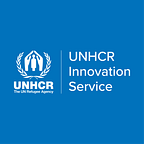What is an innovation lab?
This is an excerpt from UNHCR’s recently released report: Innovation at UNHCR 2014. This report highlights and showcases some of the innovative approaches the organization is taking to address complex refugee challenges.
The word ‘labs’ is sometimes conflated with the fashionable nomenclature of innovators and innovative organizations. For others, the word ‘lab’ may conjure up images of men and women wearing large plastic goggles and white coats, almost certainly holding test tubes full of colorful — possibly fizzing — liquid.
At UNHCR Innovation we don’t wear large plastic goggles or white coats, and our offices aren’t littered with bottles of colorful/fizzing liquid.
We do, however, include Innovation Labs as one of our five main foci — called “Pillars” — which form the framework around which the unit operates.
Each of the Labs form a thematic focus on which UNHCR is committed to innovating based on a request from a Division to collaborate, which may or may not be combined with a pre-identified organization-wide need. Innovation Labs are a co-working space — both virtual and physical — in which new ideas can be explored, in which hands-on project management takes place, and in which lessons learned are documented and shared with the co-owning Division. Innovation Labs are also a space from which the scaling of good practices can emerge.
What do I mean by “co-own”?
We employ a collaborative work model in which the Labs are co-owned and co-invested by the respective in-house Division. For example, the Learn Lab is run together with the Division of International Protection’s Education Unit, and the Energy Lab is run together with the Division of Program Support and Management’s Energy and Environment Unit. Both Labs have a full-time staff member who manages the Lab and sits both within UNHCR Innovation and the respective unit.
This model ensures a couple of different things:
- The Lab is tied and embedded in the work of the Division that co-owns and co-invests in it;
- The Lab is tied and embedded in the work of UNHCR Innovation, including the activities of the other Labs, but equally, the other Pillars through which we work.
These are two integral parts of the innovation approach within UNHCR that speaks to sustainability, relevance, and ownership.
UNHCR Innovation does not ‘own’ innovation; we’re simply charged with making sure that the conditions are there, to the extent possible, to allow innovation to grow, and be driven by the right parts, and people, of our organization.
In 2015 we’re going to see the Link Lab receive a Lab manager, who is going to work closely with two Divisions as well as UNHCR Innovation. We’re also going to see the Emergency Lab receive a Lab manager, who will work closely with the Division of Emergency Services and Supply, and will focus on Communicating with Communities (CwC). The Learn Lab is now mature enough for it to move closer to the field, so we’re going see this Lab move to Nairobi.
In 2015 the Labs are going to continue to be agile, exciting places for UNHCR, and I’m looking forward to seeing what they produce.
